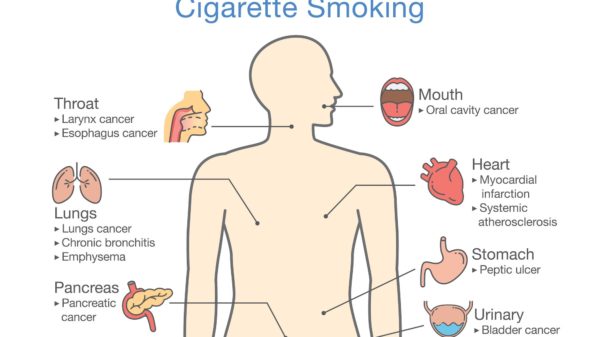For those looking to quit smoking cigarettes or using other tobacco products, there is an array of tools, therapies and treatments that can help. Many of these options are nicotine replacement therapies (NRTs).
NRTs help individuals who want to quit smoking or reduce their smoking habit by delivering nicotine in steady doses. These NRTs also give nicotine without the added chemicals found in cigarettes. Through NRTs, cravings for nicotine can be reduced or go away altogether.
What Is NRT?
NRTs intend to replace the nicotine found in cigarettes and other tobacco products. These treatments can help reduce cravings and also appease withdrawal symptoms.
NRTs can be a good option for most individuals who are looking to quit smoking. However, teens, pregnant women and those with serious health conditions should talk to a doctor before they start using any type of NRT. Individuals often need to be at least 18 years old to purchase NRTs or any products that contain nicotine, as well. NRTs can be especially good for smokers who are highly dependent and have tried quitting on their own with no success.
Different Types of NRTs
There are many NRT options that fit individuals’ different habits, lifestyles and budgets. There are also options for both short and long-term use. Most NRTs have been found to be safe and effective, even if someone has had a couple of cigarettes while simultaneously using an NRT.
Different types of NRTs can also be safely combined. Some individuals find it works best for them to combine a short-acting NRT, such as gum, with a long-acting NRT, such as the patch, when they are trying to quit cigarettes and other tobacco products. Out of all the NRT options, it has been found that individuals are most likely to use the gum and patch correctly.
Nicotine Gum
Nicotine gum is a well-known, effective NRT. While 2 milligrams is a standard dose, highly dependent smokers who are looking to quit could use the gum containing up to 4 milligrams. Individuals typically chew one to two pieces of gum every four hours as they start trying to quit smoking or using other tobacco products. It is advised not to chew more than 20 pieces of nicotine gum a day.

One should also wait at least 15 minutes to chew a piece of nicotine gum after drinking an acidic beverage, such as coffee, tea or soda. For the best dose, the gum should be chewed slowly, then kept between a person’s gum and cheek once the gum’s peppery taste is released into the mouth.
Once chewed, the gum delivers nicotine to the blood and then brain within minutes. Some research shows that it is best to quit using this over-the-counter option within 12 weeks, though other research has found that the gum works best to help individuals quit cigarettes and using other tobacco products if used for at least 14 weeks.
Nicotine Patch
The nicotine patch is another NRT option. The patch is placed on the skin and releases a steady dose of nicotine throughout the day. Patches can be obtained both with and without a prescription.
Most patches are worn for one day and replaced after 24 hours. Withdrawal symptoms are fewer if the patch is worn for 24 hours straight. It sticks best if placed on a hairless spot or spot with minimal hair. Nicotine patches come in different doses. For those who are looking to quit and previously smoked 10 or fewer cigarettes per day, or for those who weigh less than 99 pounds (or 45 kilograms), it is best to start with a lower-dose patch, such as 14 milligrams.

To help fully quit nicotine, the patch’s dose can be lowered over a few weeks as one is gradually weaned off of using cigarettes and tobacco products. For those who are having trouble quitting, they can use a higher-dose patch to help them fully quit. The patches can be obtained both with and without a prescription.
The nicotine patch has a quit rate of 23-27%.
Nicotine Inhaler
The nicotine inhaler is another NRT option. The inhaler comes with a mouthpiece and a cartridge containing about 10 milligrams of nicotine. Using the inhaler mimics the “hand-to-mouth ritual” of smoking a typical cigarette, so it can be a good option for those who crave the technique used to smoke a cigarette.
However, most of the nicotine from this device is delivered into the oral cavity, esophagus, and stomach, despite being termed an inhaler. Only 4% of the nicotine is delivered into the lung. The absorption rate for the inhaler is similar to the absorption rate for the gum.
Nicotine inhalers tend to be obtained with a prescription. Their use can have a quit rate up to 25%.
Nicotine Lozenges

Nicotine lozenges generally come in tablet form and are taken orally, where they dissolve in the mouth. It takes about 30 minutes for a lozenge to dissolve. This over-the-counter-only option has a similar dose to that of nicotine gum, and lozenges also come in 2 milligram and 4 milligram doses. The nicotine from the lozenges is absorbed into mucosa before being delivered to the rest of the body’s system.
The lozenges are a good NRT option for individuals who like the immediate, intermittent nicotine dose that the gum gives, but do not like chewing gum.
Nicotine lozenges can have a quit rate of up to 24%.
Nicotine Nasal Spray
As an NRT, the nasal spray can deliver nicotine very quickly. This prescription-only option absorbs more quickly into the bloodstream than other NRTs. The device generally delivers .5 milligrams of nicotine per 50-uL squirt. The dosage is generally two squirts or one per each nostril. Those new to the nasal sprays are advised to start with one or two doses per hour, with a maximum of 40 doses per day.
Nicotine nasal sprays can have a quit rate up to 27%.
Other Options for Quitting

In addition to NRTs, individuals can try a variety of other techniques to help curb their cigarette smoking and tobacco use habits. These treatments range from natural stress and anxiety relief strategies to cognitive behavioral therapies.
When quitting smoking, individuals can experience withdrawal symptoms, which include anger, frustration, irritability, anxiety, and depression.
As many people turned to cigarettes or other tobacco products as a stress relief or stress management tool, it can be hard to find suitable alternatives once one has taken steps to quit smoking. However, individuals can try relaxation techniques and other methods to cut down on stress in a healthy way instead of through smoking. Some key stress-reduction techniques include the following:
Taking Slow, Deep Breaths
Taking slow, deep breaths is a calming technique. Thus, it can also be helpful to try to calm down if one feels anxious and is craving a cigarette.
Practicing Self-Care Habits
Self-care habits can include taking warm baths, journaling and other options to stay calm while quitting smoking.
Exercising and Staying Active
There are many types of exercise that can help one stay calm, centered and help quit smoking. These include hiking, swimming, going for long walks and practicing yoga. One can try out different exercises to see what they most enjoy. Stretching before and after exercise, and in general, is also good for the muscles and can help one relax.
Practicing Relaxation Techniques
Meditation is an ideal relaxation technique that can help one stay calm and relieve anxiety that might lead to wanting to smoke. It is also important to get enough rest.
Cutting Coffee
Many smokers crave a cigarette with coffee, so switching to tea while quitting could be a good option to cut the craving.
Reaching out to Friends, Family and Other Social Support Networks.
Having a solid social support network can encourage individuals to meet their quitting goals and empower them to do so. Humans are social beings who do well with support from others in difficult times, and smoking can be a challenging task to take on alone.
While these treatments may not work for everyone, they can be an initial step to try and quit smoking, especially for individuals who are not yet severely dependent or use cigarettes to manage stress, anxiety and other issues.
Quitting Is Possible
Nicotine is an addictive chemical, and many who find themselves wanting to quit cigarettes or other tobacco products may struggle to do so as a result. Thus, NRTs are a good option for many individuals who would like to quit smoking, aside from pregnant women, teens, and those with serious health conditions who have not yet consulted a doctor about using NRTs.
From the gum to lozenges to the patch to inhalers to sprays, the plethora of NRT options means individuals can find the best one for their budget, habits and lifestyles.
NRTs and other quitting strategies can also work best when combined with a quit plan. A variety of quitting hotlines, programs and apps can be used to supplement quitting efforts sought by those using NRTs. Greater success in quitting is also expected if a combined, targeted approach is used to quit smoking cigarettes and using other tobacco products.








